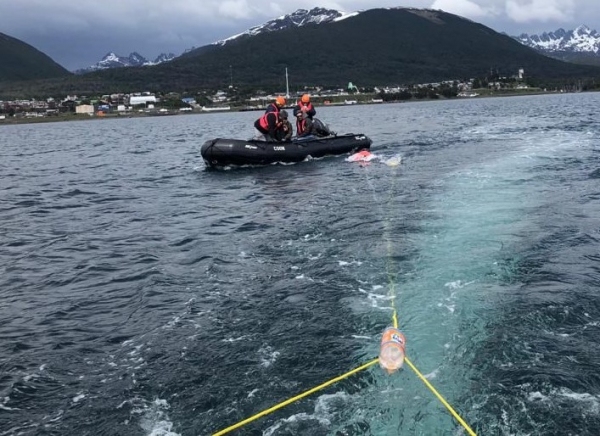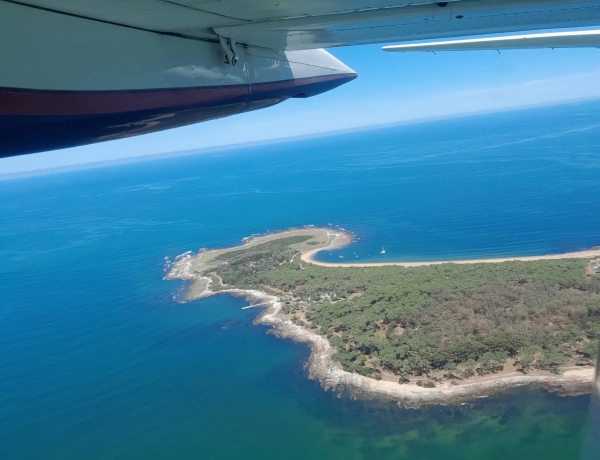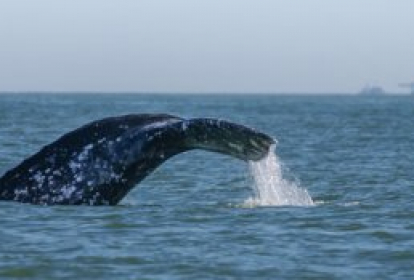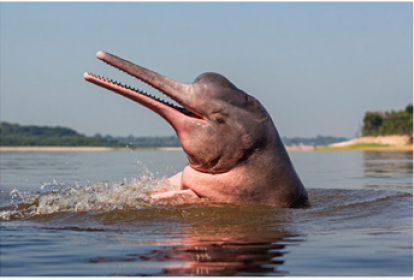Conservation Management Plans (CMPs) are an important conservation initiative of the IWC. They provide a framework for countries within the range of vulnerable cetacean populations (known as range states) to work together, and in collaboration with other relevant stakeholders, to protect and rebuild those populations.
Cetaceans face an array of threats including fishing bycatch, entanglement, ship strikes, habitat loss, pollution, climate change and acoustic disturbance. CMPs are flexible management tools that help range states address these threats. They draw on the best available science and management expertise from the international community, and can be tailored to meet individual circumstances.
The CMP programme is managed by the Standing Working Group on CMPs in accordance with the principles outlined in the CMP Strategic Plan (2022-32). The CMP work plan outlines priorities for existing and future CMPs, and includes guidelines for their development and implementation.
The Standing Working Group collaborates closely with the Scientific and Conservation Committees to ensure that policy and management actions are underpinned by the best available scientific advice. The Standing Working Group reports to the Conservation Committee, which in turn reports to the Commission. You can read the latest report of the Standing Working Group here.
The process for each CMP involves a number of interrelated stages: nomination; development; implementation; monitoring; and review. A map outlining the stages of the CMP process can be found here. A Commission-approved CMP template is also available here.
CMPs have been developed for five vulnerable cetacean populations: the Western North Pacific Gray Whale, the Western South Atlantic Southern Right Whale, the Eastern South Pacific Southern Right Whale, the Franciscana dolphin (the first CMP for a small cetacean species) and the Amazon River Dolphin (the first for a freshwater cetacean).
You can read about the individual CMPs for each population below:
- Western North Pacific gray whale
- Western South Atlantic southern right whale
- Eastern South Pacific southern right whale
- Franciscana dolphin
- Amazon River dolphin
Latest news
Workshop on Western South Atlantic southern right whales: March 2024
The next meeting of stakeholders for this CMP will take place in March. The workshop will review progress and update research and conservation 
activities. Key topics include movement, migration and feeding grounds, long term monitoring of abundance and trends, and the regional
entanglement strategy (see below).
Western South Atlantic southern right whale entanglement response training
In December 2023, thirty five participants attended a two-day, bi-national workshop to learn safe and effective protocols for responding to
entangled large whales. Entanglement in fishing gear and marine debris is an identified threat in the CMP. As well as building capacity and
equipping teams to respond to entanglements, the workshop addressed the ultimate aim of preventing whales from becoming entangled in
the first place.
Read more
Aerial surveys of the franciscana dolphin
A month-long, multi-agency survey was conducted in March 2023 by scientists from Brazil and Uruguay. This fieldwork was the next step 
in work to establish the size of the population, vital to understanding its conservation status and an important component of the franciscana
CMP framework.
Read more
Priority species for future CMPs
Arabian Sea humpback whales
The Arabian Sea population of humpback whales was first suggested as a possible candidate for the development of a CMP in 2010. The population is listed as endangered by the International Union for Conservation of Nature (IUCN) and is believed to comprise less than 100 individuals.
Severe scarring from entanglement, coastal infrastructure developments, offshore hydrocarbon exploration, the potential for unregulated whale-watching, and the planned commencement of new shipping routes and increased shipping traffic through known habitats is concerning, and make the population an ideal candidate for a CMP.
Consistent with advice from the Scientific Committee, research on this population has continued, along with efforts amongst scientists and non-government organisations to establish a regional initiative to co-ordinate conservation efforts for the population.
An Arabian Sea Humpback Whale Network was formed during a workshop held in Dubai in 2015. The network has been used to exchange information and showcase research and conservation in various range states.
In October 2017, the Conference of the Parties of the Convention on Migratory Species agreed a Concerted Action for the population, which included the development of a CMP. Supporting statements were made by Oman, India, Pakistan, United Arab Emirates, Ecuador, Iran, Saudi Arabia, and the IWC’s Secretariat.
The IWC will build on these developments and continue to engage with relevant range states to encourage and support the development of a CMP for the population.
Central American humpback whales
The IWC Scientific Committee has recommended that Central American humpback whales are treated as a priority population for the CMP development process. This population is vulnerable to a number of threats including entanglement in fishing gear, ship strikes, underwater noise and the impacts of climate change.
Three preparatory workshops have been held. The latest took place in Mexico in October 2022 and focused on updating abundance estimates and information on distribution, movement, migration and genetics.
Collaboration is continuing with range states, including both IWC member and non-member governments, and it's hoped that a CMP proposal will be presented soon.
Mediterranean sperm whales
This population is listed as endangered by the IUCN and considered by the IWC Scientific Committee to be a priority population for the CMP development process. Particular threats include ship strikes, ocean noise and bycatch in fishing gear. Mediterranean sperm whales are also considered especially vulnerable to the threat posed by marine litter.
Co-ordination is complex as there are a large number of IWC member and non-member range states including Albania, Algeria, Cyprus, Egypt, France, Greece, Italy, Libya, Malta, Monaco, Morocco, Spain, Tunisia and Turkey.
Mediterranean fin whales
Work on a CMP for Mediterranean fin whales has been led by ACCOBAMS (Agreement on the Conservation of Cetaceans of the Black Sea, Mediterranean Sea and Contiguous Atlantic Area). Ship strikes and ocean noise are key concerns. This population is also believed to be impacted significantly by habitat degradation including chemical and micro/nano-plastic pollution.
Mediterranean fin whales are also considered a priority population for the CMP development process and a draft CMP has been developed by ACCOBAMS. It's hoped this can be formalised and endorsed shortly.



